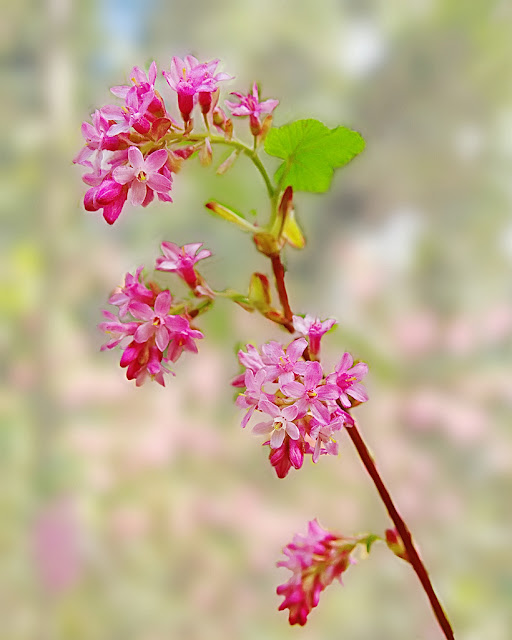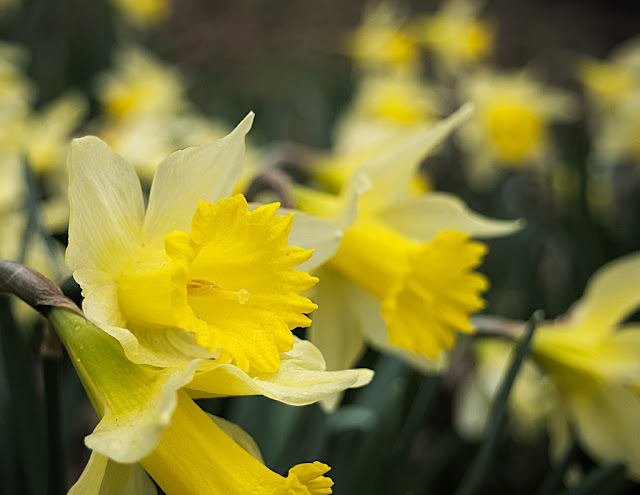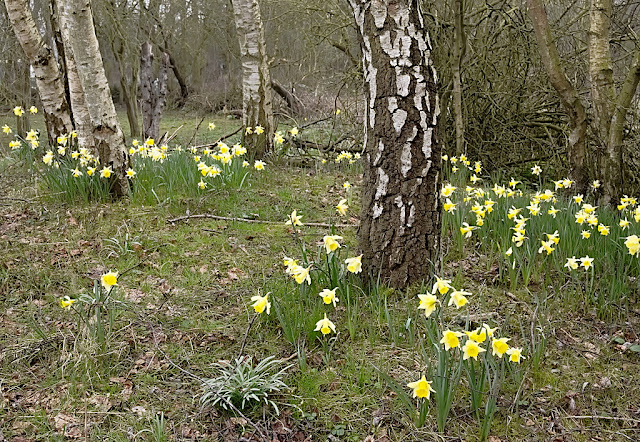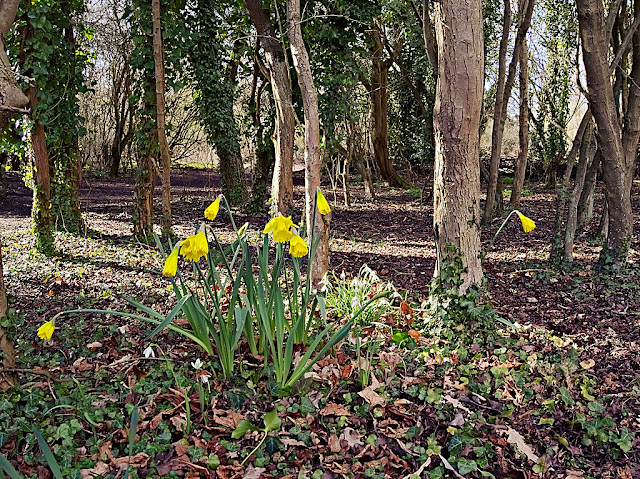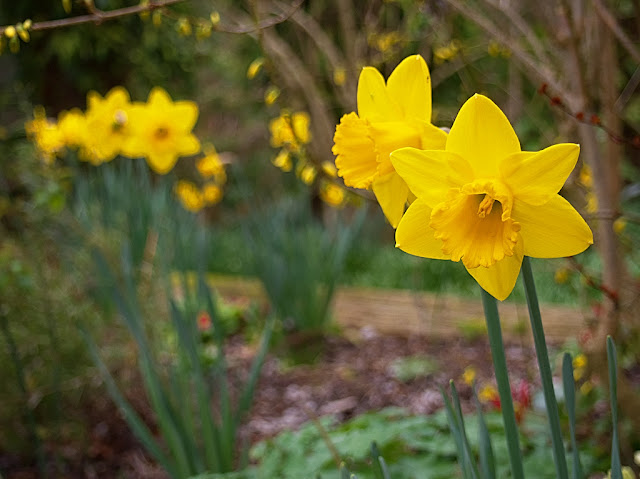 |
| Young Sycamore - 24 March 2017 Sycamore are amongst the first trees to get their leaves. Here at the end of March the new leaves shine in the spring sunshine. |
In the past two years, I have tried to capture the landscape of the park at the tipping point when the trees first begin to turn green, with results that have not been wholly convincing. This year, I have photographed individual buds as they unfurl.
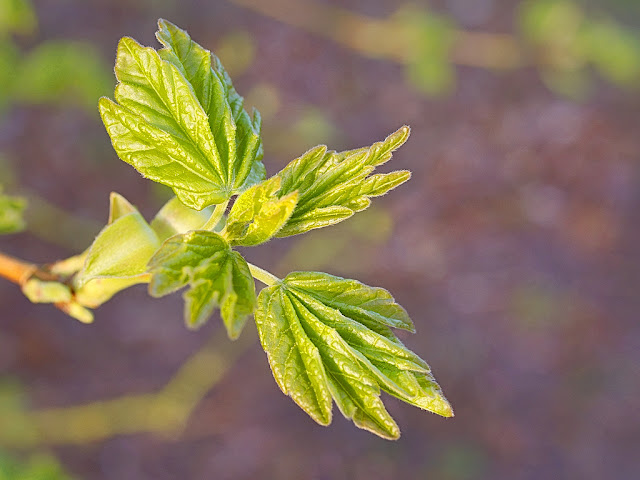 |
| Field Maple - 26 March 2017 Field maple is one of the dominant shrubs in the park. Their new yellow/green leaves give the park a springlike feel. |
In February, the trees are drab, brown and bare, hide nothing. The opposite bank of Dickerson's Pit is clearly visible across the water from the path that runs alongside the eastern border of the park. By June, the trees are completely covered with leaves, whose colours range from the willow's silvery green, through the red green of the sycamore, to the bright saturated colours of the hawthorn, and which form an almost impenetrable screen between the waters of the pit and the visitor.
 |
| Bramble - 26 March 2017 There is plenty of new growth on the brambles, but plenty of last year's leaves are still in evidence. |
But the change is gradual, and like all gradual changes, it isn't noticed, particularly since it is punctuated by tidal waves of white spring blossom. How late would the leaves have to appear before anyone remarked on the delay? For instance, imagine if the winter was very cold and extended so that the trees were still bare in June, would anyone talk about the lack of leaves, or would they discuss how late the hawthorn flowers were?
 | |
| Oak - 23 April Oak are one of the last trees to get their leaves. This was one of the oak trees on remembrance meadow. |
Neither is it a single monolithic process, but a whole series of changes as each tree species gets its leaves at different times. It starts with the elder in February; this is followed by the sycamore, then the hawthorn; and, finally, in May, the beech and the poplar. As far as I can find out, only the relative timing of the appearance of the leaves of the ash and the oak has made it into weather lore:
Ash before Oak - we're in for a soak,
Oak before Ash - we're in for a splash
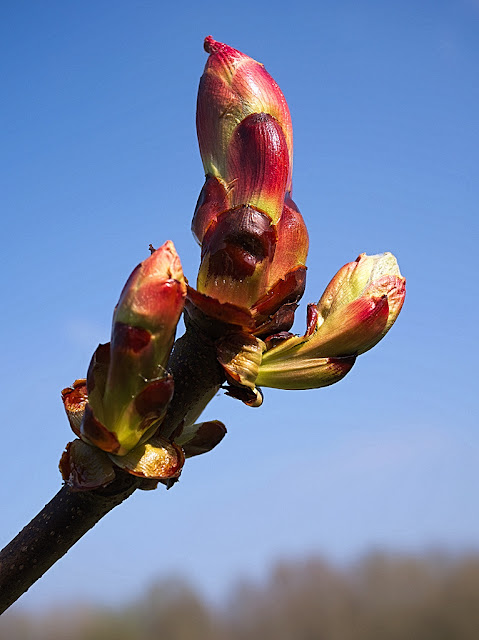 |
| Horse Chestnut - 26 March 2017 The unmistakeable sticky bud of the horse chestnut on one of the newly planted chestnut trees at the south end of the park. |
Perhaps the one bud everyone knows is the sticky bud, the large bud of the horse chestnut which is covered in a sticky resin. The resin serves a dual purpose, it protects the bud from frost and water damage, and also against attack by small insects. As the day temperatures rise, the resin melts and very quickly the large palmate leaves unfurl.
 | |
| Unfolding Hawthorn Bud - 26 March 2017 Close up of bud shows emerging flower buds amongst the unfolding leaves |
Close scrutiny of a developing bud reveals it is far from a simple case of a single leaf emerging from a single bud. Take, for instance, this picture of a developing hawthorn bud. There is clearly a rosette of leaves, inside of which are the flower buds. All tightly packed together in the minimum possible space. If this were the end product, we would admire it. As it is only a short lived stage in the development of the anticipated flower, it is ignored.
But beyond a masterpiece of packaging engineering, consider what a photograph cannot show. Each new cell that is created has the same DNA, and therefore the same potential, as every other cell in the whole tree. What controls how any particular cell develops? What determines whether it becomes part of the fabric of the leaf, part of a vein, or part of a petal?
Further Reading
Aesculus hippocastaneum
Horse Chestnut
Next: Catkins



